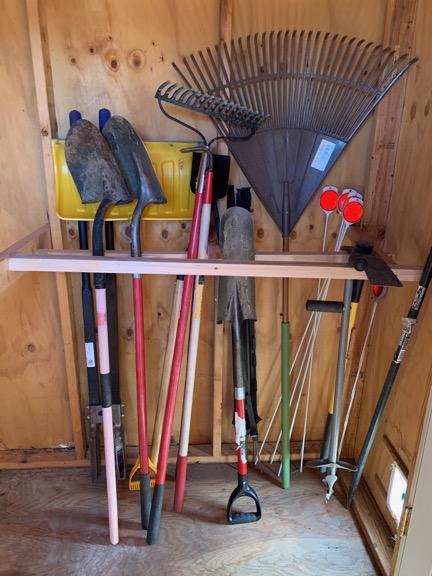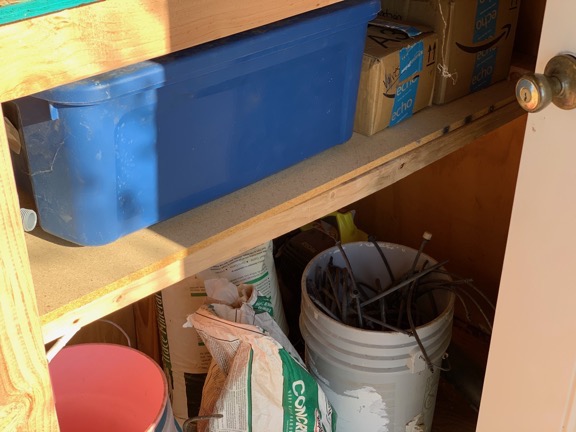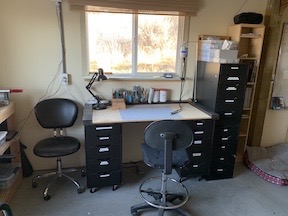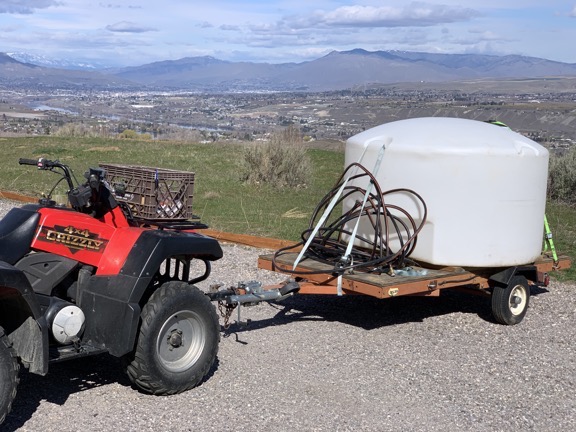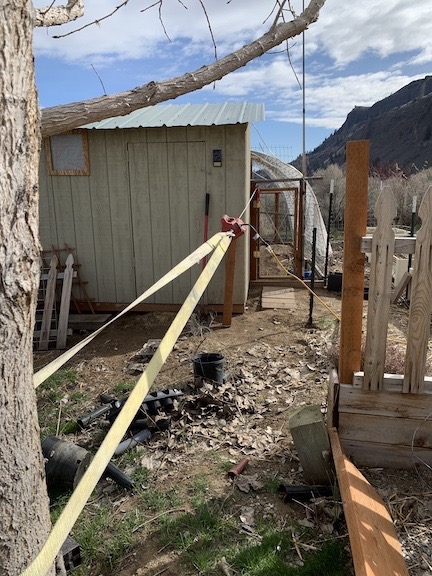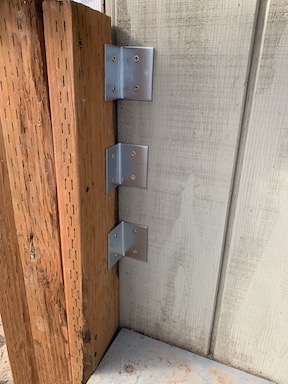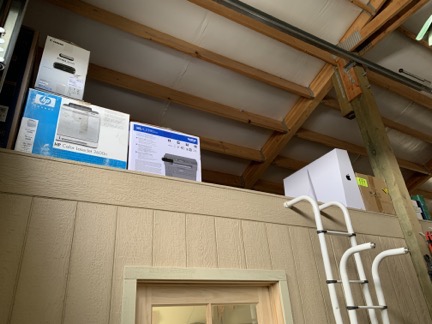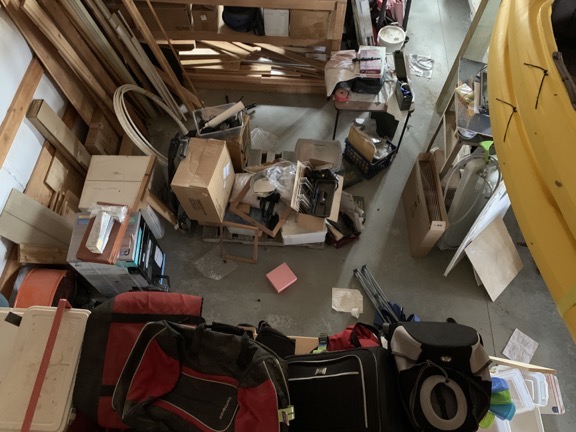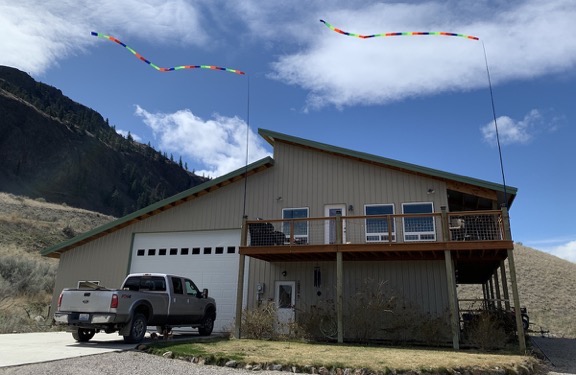What I’ve been up to lately.
I know I haven’t been blogging much lately — other than to share my YouTube videos — and I apologize. I know a lot of folks come here to see what I’m up to and not necessarily to see big helicopters land in clouds of dust.
But regular readers should know why I’m not blogging: I’m keeping busy doing other things. Here’s a rundown of what I’ve been up to.
Cherry Drying
One thing I’m not doing lately is drying cherries with my helicopter. We haven’t had measurable rain here since June 28 and that’s the last day I flew.
This is both good and bad.
The good thing is that my helicopter is inching ever closer to the Hobbs meter number that will force me to bring it in for over haul. As I type this, I have 88 hours left until I must stop flying it.
If you watched my livestream video about helicopter operating costs, you’ll know that this required maintenance will cost about $250,000 (not a typo). I’ve been saving, but not that much. So I’ll have to go into debt to pay for that overhaul. (I hate being in debt.)
But because I’m hardly flying it at all, I realized that I can simply put the helicopter away for the winter and save those 80+ hours for next year’s cherry season, thus putting off the overhaul for a whole year. I should be able to save a bunch more money for it, thus reducing the loan I’ll need. It will also Eliminate the stress I’d feel trying to operate a helicopter tour/charter business when virus-related issues — social networking, the economy, etc. — might make it hard to bring in the extra cash I’ll need to keep up on the loan.
That’s the good side of this issue.
The bad side is that I like flying, especially when I can send someone an invoice when I’m done. Although I’ll get a few more flights in before I put the helicopter away — after all, I do have that YouTube channel to feed — it won’t be much.
Fortunately, all of my cherry drying contracts include a daily standby fee, so even if I don’t fly, I’m bringing in money to cover my personal and business costs.
Of course, the standby fee means I have to be on standby, available to fly 7 days a week during daylight hours. So since May 29, when my season started, I’ve been pretty much hanging around at home — or at least the Wenatchee area. (I guess a lot of folks are in the same boat with the virus running rampant throughout the country.)
During the busiest part of the season, when I had the most acreage to cover, I had four pilots helping me cover it. They left one-by-one as orchards were picked and there was less and less acreage to cover. The last one left about 2 weeks ago. Today I’m covering 34 acres by myself.

Here’s the view from my deck back on June 16; you can see four helicopters (including mine) parked in a cleared cherry orchard. The fifth helicopter was based in Quincy, covering one of my contracts there.
Starting tomorrow, I’ll have just one orchard of just 17 acres to cover until August 23. Even though the standby for just 17 acres is pretty low, I’ll stick around until all the cherries there are picked.
Cherry Driving
No, that’s not a typo. I spent a week driving cherries from an orchard to the packing house.
One of my clients was looking for someone to drive a pickup truck pulling a trailer full of cherry bins from their orchard to the packing house about 15 miles away. They knew I had experience pulling heavy trailers — after all, I lived near their orchard in my old 36-foot fifth wheel for several seasons in a row — so they offered me the job. I had nothing else that I had to do, I had to stay in the area, and I didn’t mind making a few bucks and learning about another part of the business. So I said yes.
The truck was a 2004 Ford F350 4WD diesel pickup remarkably like my old green truck (RIP). The trailer was a dual axel with 4 wheels per axel flatbed with a gooseneck hitch that had been customized to hold eight stacks of plastic cherry bins.

Here’s the rig I drove, nearly loaded, parked at the orchard’s loading area. Shade and mist help keep the area cool. Each bin of cherries is hosed down and then covered with a water-soaked foam pad to help keep them cool.
Cherry bins measure roughly 4’w x 4’d x 1’h and hold about 300-340 pounds of cherries. For the first bunch of runs, they stacked the bins 5 high so I was carrying 40 bins or 13,000+ pounds of cherries. This turned out to be the challenge: controlling speed for the first 8 miles of the drive to the packing plant, all of which was downhill.
Of course, before I left I also had to strap down those bins, which required tossing coils of ratchet tie-down straps over the tops of the bins and fastening them on the other side. It would not be good if I took a curve too quickly and the bins tumbled off.
One off my clients went with me for the first run so I’d know how to do it. I almost immediately got into trouble. The roads in the orchard are narrow and twisting and there was a hairpin curve I had to negotiate. I was so focused on the curve that I didn’t register the loose gravel in the middle of it. When I braked to slow (from about 10 mph), the wheels locked up and I came very close to sliding off the road into someone else’s orchard.
Oops.
Backing up uphill with 13,000+ pounds behind me on loose gravel wasn’t easy. I threw it into 4WD and had to use a foot on the brake while I pressed the accelerator to actually start backing up. I only needed to go back about 5 feet and managed to do it. Then we made the curve and were on our way.
I did not make that mistake again.
It took 45 minutes to get to the packing plant and they were stressful minutes. The setup had the braking distance of a freight train so I had to go very slowly any time there was a chance I might have to stop.
But then I was pulling into the delivery entrance and stopping at the entrance check point. I unfastened the tie downs while they took sample cherries and did a bunch of paperwork. Then on to the offloading area, where a team of forklifts took those 40 cherry bins off in less than three minutes. (And no, that’s not an exaggeration.)
On most trips, I came straight back, but on a few trips I needed to pick up (and strap down) empty bins or bins full of the foam pads they use to help keep the cherries cool in transit. Either way, the trailer was so light that I was able to get back in 30 minutes.
I made three runs the first day and two runs each of the next six days. I started at 8 AM — three hours after the pickers started because it took that long for them to fill 40 bins of cherries — and was usually done by noon — two hours after the pickers had finished and gone home. (They can’t pick cherries when it gets hot out and that week was very hot.) Although most loads had 40 bins early in the week, by the end of the week I was taking 44 bins (4 stacks of 5 and 4 stacks of 6). That’s nearly an extra ton. I got pretty good at controlling speed and handling the load and had no mishaps.
Along the way, I learned a lot about packing cherries. I think that was the best part of the experience; learning new things.
Cherry & Blueberry Picking
Like every year I’ve been up here during the summer — including years before I actually moved here — I always manage to get out for some cherry and blueberry picking.
I pick cherries after the growers have picked, “gleaning” what the pickers missed. I actually picked a lot more this year than I usually do, starting early with rainier cherries in an orchard near my home and, more recently, at the same orchard where I did my cherry driving. The key is to get to the orchard within a few days of picking; if you wait too long, the cherries are so far past prime they’re not worth picking.

My first batch of blueberries.
I pick blueberries at the same orchard where I did my driving gig. The orchard owners have about 400 blueberry bushes that they don’t harvest commercially. Instead, they invite friends to come pick when they like. The season lasts well over a month — the blueberries on a bush don’t all ripen at the same time like cherries or other tree fruit do — so I can go weekly and bring home enough to freeze and still eat blueberries all week. I usually bring a friend and chat while we’re picking.
I bring my pups along on these outings. Like Penny, they enjoy running around the orchards, sniffing for mice and other rodents. It’s good to get them out someplace other than home where they don’t need to be on a leash.
Getting Out On the Water
Amazingly, I’ve only been out on the water three times so far this summer, but all three trips were real wins.
The first outing was in my own little boat with two friends. I blogged about that here, so I won’t repeat any details.
The second was paddling with my friend Cyndi and her dog. This was Lily and Rosie’s first time out on a kayak and, at first, they didn’t know what to make of it. I had life jackets on both of them and had them tethered to the kayak with expanding leashes and it’s a good thing I did! Lily took two dives into the water and Rosie took one. In both cases — their first times swimming! — their life jackets gave them plenty of floatation and I was able to reel them in with the leash as they swam back to me. We paddled around the estuary at the confluence of the Wenatchee and Columbia Rivers. The water was high so there were lots of channels to explore. We even got a chance to stop on a beach where Rosie surprised me by swimming out to my friend Cyndi who called her from the shallows.
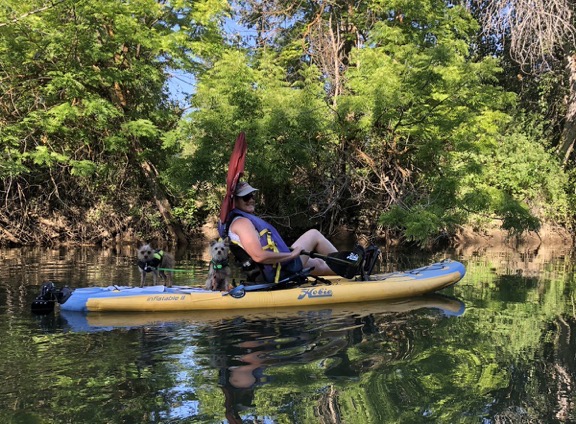
Here we are, paddling in the estuary. By this point, the girls knew the drill and stayed on board.

Here I am with Cyndi, holding up the six fish we caught.
The third trip was with Cyndi and her husband Matt on their fishing boat. I woke up at 2:45 AM so I could meet them at 3:30 for the hour+ drive to Pateros. We were on line at the boat ramp at 4:45 AM and joined the crowd of salmon fishers near the mouth of the Okanogan River upriver from Brewster by 5. I can’t believe how close the boats were to each other, trolling along on silent motors, pulling one sockeye salmon after another out of the river. We hit our limit of two sockeyes each by 8 AM and spent some time trying for chinook, which requires a different line setup and technique. After a half hour with no luck, we called it quits. I was happy! I took my two fish home and filleted them, freezing three large fillets and leaving a fourth for dinner. I also cooked up the bones for fish broth and made myself a nice salmon chowder with garden veggies and the trimmings from my filleting work.
Gardening
My garden is bigger and more productive than ever this year. This spring, I finally pulled out the last pallet planter I’d built, replacing it with one of the plastic cherry bins I’d bought as raised garden beds. That brings the total count to 11. (I have one more bin to install, but I need to do some deconstruction on a flower bed to fit it in; that’s an autumn project.)

Here’s one evening’s side dish, brought in from the garden. I washed and chopped all of these, then roasted them with herbs in the oven. Delicious!
What did I plant? Let’s see. Broccoli, Brussels sprouts, onions (2 kinds), beets, radishes, scallions, tomatoes (3 kinds), asparagus, potatoes (3 kinds), sweet potatoes (2 kinds), peppers (4 kinds), eggplant (2 kinds), horseradish, spinach, carrots, strawberries, zucchini (2 kinds), yellow squash, pattypan squash, cucumbers, delicata squash, cantaloupe, watermelon, pumpkins, corn (2 kinds), green beans. Well, I didn’t plant the green beans — they planted themselves and have been doing so for the past four years.

Have you ever seen a red potato this big? That’s my hand under it — and my hands aren’t small. I pulled it out of my garden last week.
I’ve been harvesting a little of almost everything and planting more beets, carrots, scallions, and radishes any time a bed empties and onions every time I pull a row. The only veggies I buy at the supermarket now is salad greens and broccoli (because it’s all done now). Everything else comes out of the garden and, frankly, I can’t keep up with production so I’m giving a ton away.
The 11 chicks I got in April are just getting ready to start laying. I just started an egg subscription service for neighbors: $10/month gets you a dozen eggs delivered to your doorstep once a week — if you give back the cartons. When I have all 16 chickens producing, I’ll be getting a dozen eggs a day and will need to do something with them. There’s only so much quiche a person can eat.
Cooking
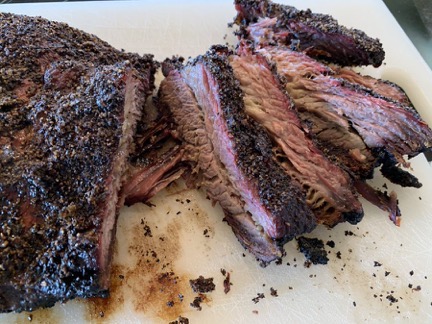
I finally found a brisket recipe I felt able to follow — with some modifications — and made this. Not bad for a first try.
Like most of the folks stuck at home this summer, I’ve been doing a lot of cooking. Some of it is an attempt to use up some of the produce coming from my garden or the orchards and blueberry patch where I pick fruit. Others are attempts to make something I’ve always wanted to try making.

The cake tasted even better than it looks, but what was I thinking?
When I make something that freezes well, I portion it out, vacuum seal it, and put it in my garage freezer so I always have a quick meal available on those days I don’t feel like cooking. I made a blueberry zucchini cake recently and wound up giving nearly all of it away to neighbors and friends. What was I thinking when I made a cake that big?
Other Stuff
I’ve also been making and selling jewelry, although not as much as I’d like. I think I’ll save that for another blog post.
I’ve also been doing a lot of video editing for my YouTube channel, but I’ll whine about that in another post, too.
But these are the main things I’ve been up to this summer. When the weather is nice, I’d rather do stuff outside than sit in front of a computer typing up a blog post and that explains why I haven’t blogged so much.
I will try harder to blog more in the future. I find that my blog posts are the best way I can remember the things that went on in my life years after these things happen. My blog is my journal and I really do need to stick with it.










